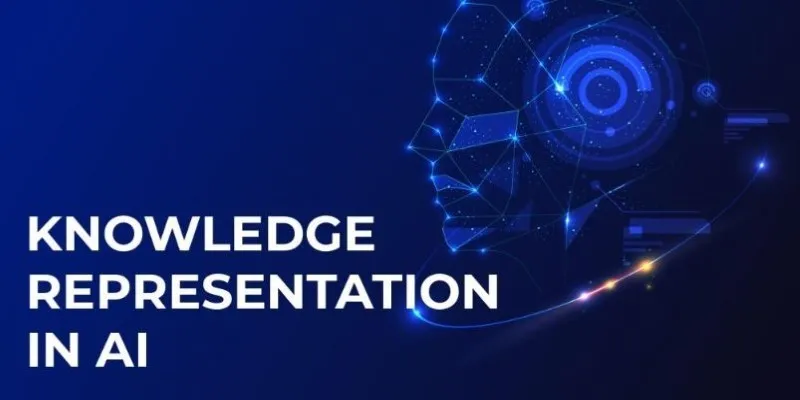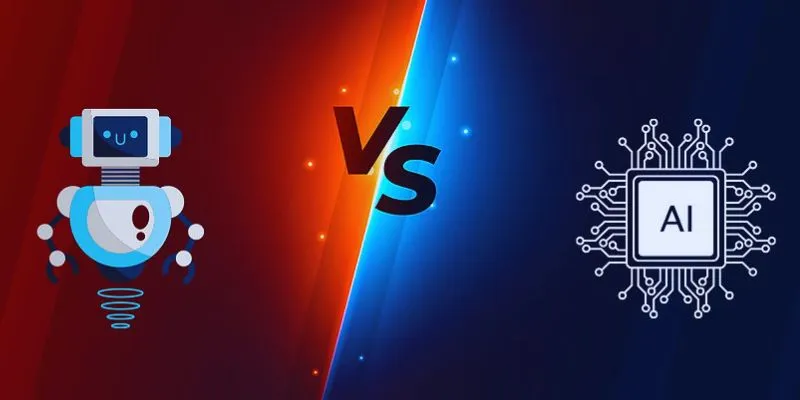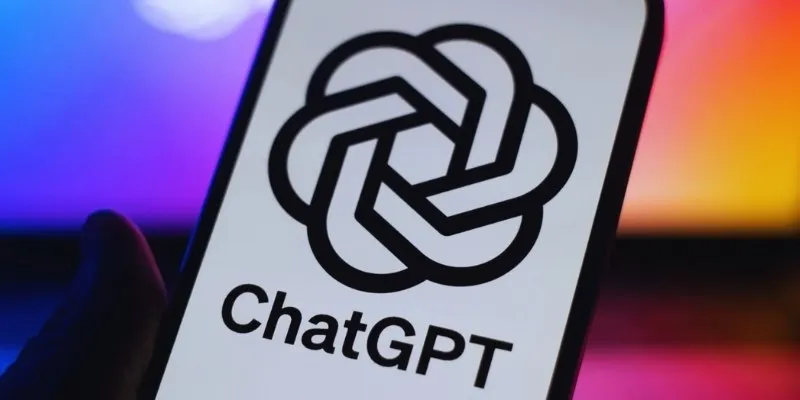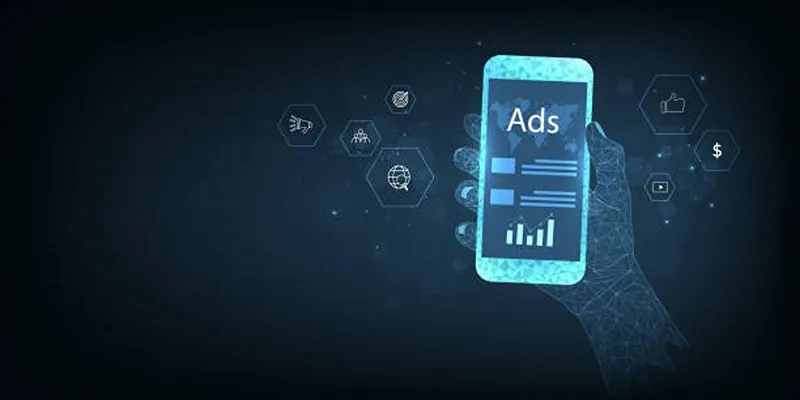Agentic AI workflows are transforming the way businesses operate, enabling seamless task automation, smarter decision-making, and improved productivity. Designed to adapt to various challenges and streamline operations effortlessly, these workflows empower businesses to tackle complex processes with ease. This guide will break down the fundamentals of agentic AI workflows, making them accessible and easy to implement for all.
What are Agentic AI Workflows? Agentic AI processes are where artificial intelligence acts as a helpful assistant to get things done. Imagine having the smartest robot assistant capable of thinking, planning, and figuring things out for you! These processes make decisions about what to do next, much like how you would plan out your day or solve a puzzle. For example, they can assist with activities such as organizing information, retrieving answers quickly, or even creating things like stories or images. Agentic AI works by bringing intelligent tools to achieve goals, speeding up work, and making it easier for everyone! ## How Does It Differ from Conventional AI? Agentic AI differentiates itself from typical AI in its emphasis on autonomy and decision-making. Unlike typical AI, which often requires human intervention to perform specific actions, agentic AI plans, adapts, and solves complex issues independently. This allows it to perform dynamic goals seamlessly, offering users better efficiency and a more natural technological experience. ## Key Components of an Agentic AI Workflow  Agentic AI systems are designed to be efficient, adaptable, and capable of managing tasks with minimal human input. These systems follow a structured workflow that ensures tasks are accomplished effectively and autonomously. Below, we explore the key components of an agentic AI workflow: ### 1. Goal-setting The first step in an agentic AI workflow is clear goal-setting. The AI identifies what it needs to achieve, whether it’s answering a user query, performing analysis, or completing a creative project. By understanding the end objective, the AI can create a focused strategy to achieve the desired results, ensuring its efforts are aligned and purposeful. ### 2. Planning Once the goal is defined, the AI breaks the task into smaller, manageable steps. This planning phase helps the system map out an efficient route to completion. For example, if tasked with generating a report, the AI may gather data, analyze information, and organize insights sequentially. This structured approach minimizes errors and ensures smooth execution. ### 3. Tool Use Agentic AI leverages various tools, such as APIs, databases, or even other AI systems, to complete tasks effectively. By accessing these resources, the AI enhances its capabilities, retrieves relevant data, and performs complex operations. This ability to use external tools makes the system versatile and expands its problem-solving potential significantly. ### 4. Feedback Loops During execution, agentic AI relies on feedback loops to adjust its actions based on intermediate results. For instance, if an initial approach is not yielding optimal outcomes, the AI analyzes the feedback, revises its strategy, and tries a new method. This iterative process ensures continuous improvement and adaptability within each task. ### 5. Autonomy The defining feature of an agentic AI is its autonomy. Once provided with an initial goal, it can make intelligent decisions without needing constant human direction. By analyzing situations, choosing appropriate actions, and completing tasks independently, the AI demonstrates true self-sufficiency, reducing the need for frequent intervention. ## How Agentic AI Workflows Actually Work
Agentic AI systems are designed to be efficient, adaptable, and capable of managing tasks with minimal human input. These systems follow a structured workflow that ensures tasks are accomplished effectively and autonomously. Below, we explore the key components of an agentic AI workflow: ### 1. Goal-setting The first step in an agentic AI workflow is clear goal-setting. The AI identifies what it needs to achieve, whether it’s answering a user query, performing analysis, or completing a creative project. By understanding the end objective, the AI can create a focused strategy to achieve the desired results, ensuring its efforts are aligned and purposeful. ### 2. Planning Once the goal is defined, the AI breaks the task into smaller, manageable steps. This planning phase helps the system map out an efficient route to completion. For example, if tasked with generating a report, the AI may gather data, analyze information, and organize insights sequentially. This structured approach minimizes errors and ensures smooth execution. ### 3. Tool Use Agentic AI leverages various tools, such as APIs, databases, or even other AI systems, to complete tasks effectively. By accessing these resources, the AI enhances its capabilities, retrieves relevant data, and performs complex operations. This ability to use external tools makes the system versatile and expands its problem-solving potential significantly. ### 4. Feedback Loops During execution, agentic AI relies on feedback loops to adjust its actions based on intermediate results. For instance, if an initial approach is not yielding optimal outcomes, the AI analyzes the feedback, revises its strategy, and tries a new method. This iterative process ensures continuous improvement and adaptability within each task. ### 5. Autonomy The defining feature of an agentic AI is its autonomy. Once provided with an initial goal, it can make intelligent decisions without needing constant human direction. By analyzing situations, choosing appropriate actions, and completing tasks independently, the AI demonstrates true self-sufficiency, reducing the need for frequent intervention. ## How Agentic AI Workflows Actually Work  To better understand how agentic AI workflows operate, let’s examine a step-by-step example where the AI is tasked with writing a blog post. | Step | Description | |——|————-| | 1. Defining the Goal | The process begins with a clearly defined goal, such as “Write a blog post about renewable energy trends.” This input is provided by a human user or a pre-set organizational directive. The goal specifies the desired outcome, including details like word count, tone, and target audience, providing the AI with a foundation for planning its task. | | 2. Research and Information Gathering | The AI autonomously conducts research to gather relevant data. Utilizing tools like large language models (e.g., GPT-based APIs) and search engine integrations, the AI retrieves the latest information on renewable energy trends, including statistics, case studies, and expert opinions. Semantic analysis capabilities help the AI sort through vast datasets to filter out unreliable or outdated sources. | | 3. Structuring the Content | Once the information is collected, the AI organizes the content into a coherent structure. This could involve creating an outline with headings and subheadings, ensuring the blog post flows logically. Using automation tools, the AI follows best practices for structure, such as introducing the topic, presenting key points, and concluding with actionable insights or recommendations. | | 4. Drafting and Editing | The AI begins drafting the blog post, generating natural, human-like text through a large language model. Tools like content optimization APIs may be employed to ensure the text is clear, engaging, and relevant to the target audience. If inconsistencies or errors are detected, the AI autonomously reviews and revises the draft to improve quality. | | 5. Fact-Checking and Finalizing | Before finalizing the blog post, the AI conducts an autonomous fact-checking process. This step may involve comparing claims against reliable sources or using logic-checking algorithms to ensure accuracy. Once completed, the content undergoes a final quality assurance review, ensuring it aligns with the original goal and user guidelines. | | 6. Publishing or Delivery | The finalized blog post can be directly uploaded to a website or sent in an appropriate format (e.g., a Word document or HTML file) for review. Workflow automation tools can facilitate this by integrating the AI’s output with content management systems (CMS) or email delivery systems, ensuring a seamless transition to the publication phase. | ## Tools Involved 1. Large Language Models: Provide natural language processing and content generation capabilities. 2. APIs: Enable data retrieval, real-time fact-checking, and integration with external platforms. 3. Automation Tools: Facilitate workflow transitions by linking multiple systems and reducing the need for manual intervention. 4. Content Optimization Software: Ensures the content meets high standards in terms of readability, SEO, and audience engagement. ### Task Flow Tasks flow sequentially and are guided by the AI’s decision-making algorithms. Starting with goal identification, the AI prioritizes steps such as research, drafting, and editing before delivering the final product. Each task seamlessly feeds into the next, powered by advanced tools working in concert. By handling these tasks autonomously, the AI minimizes human input while maintaining flexibility to adapt or iterate as needed. ## Conclusion Agentic AI workflows are revolutionary because they save time, handle complex jobs, and boost productivity. They can adapt to any changes needed, making them highly valuable for various tasks. With AI doing the heavy lifting, individuals can focus on more creative or critical work. This technology simplifies life and supports business growth. By adopting agentic AI workflows, we can achieve our goals smarter and faster. It’s a powerful way to excel in a fast-paced world!
To better understand how agentic AI workflows operate, let’s examine a step-by-step example where the AI is tasked with writing a blog post. | Step | Description | |——|————-| | 1. Defining the Goal | The process begins with a clearly defined goal, such as “Write a blog post about renewable energy trends.” This input is provided by a human user or a pre-set organizational directive. The goal specifies the desired outcome, including details like word count, tone, and target audience, providing the AI with a foundation for planning its task. | | 2. Research and Information Gathering | The AI autonomously conducts research to gather relevant data. Utilizing tools like large language models (e.g., GPT-based APIs) and search engine integrations, the AI retrieves the latest information on renewable energy trends, including statistics, case studies, and expert opinions. Semantic analysis capabilities help the AI sort through vast datasets to filter out unreliable or outdated sources. | | 3. Structuring the Content | Once the information is collected, the AI organizes the content into a coherent structure. This could involve creating an outline with headings and subheadings, ensuring the blog post flows logically. Using automation tools, the AI follows best practices for structure, such as introducing the topic, presenting key points, and concluding with actionable insights or recommendations. | | 4. Drafting and Editing | The AI begins drafting the blog post, generating natural, human-like text through a large language model. Tools like content optimization APIs may be employed to ensure the text is clear, engaging, and relevant to the target audience. If inconsistencies or errors are detected, the AI autonomously reviews and revises the draft to improve quality. | | 5. Fact-Checking and Finalizing | Before finalizing the blog post, the AI conducts an autonomous fact-checking process. This step may involve comparing claims against reliable sources or using logic-checking algorithms to ensure accuracy. Once completed, the content undergoes a final quality assurance review, ensuring it aligns with the original goal and user guidelines. | | 6. Publishing or Delivery | The finalized blog post can be directly uploaded to a website or sent in an appropriate format (e.g., a Word document or HTML file) for review. Workflow automation tools can facilitate this by integrating the AI’s output with content management systems (CMS) or email delivery systems, ensuring a seamless transition to the publication phase. | ## Tools Involved 1. Large Language Models: Provide natural language processing and content generation capabilities. 2. APIs: Enable data retrieval, real-time fact-checking, and integration with external platforms. 3. Automation Tools: Facilitate workflow transitions by linking multiple systems and reducing the need for manual intervention. 4. Content Optimization Software: Ensures the content meets high standards in terms of readability, SEO, and audience engagement. ### Task Flow Tasks flow sequentially and are guided by the AI’s decision-making algorithms. Starting with goal identification, the AI prioritizes steps such as research, drafting, and editing before delivering the final product. Each task seamlessly feeds into the next, powered by advanced tools working in concert. By handling these tasks autonomously, the AI minimizes human input while maintaining flexibility to adapt or iterate as needed. ## Conclusion Agentic AI workflows are revolutionary because they save time, handle complex jobs, and boost productivity. They can adapt to any changes needed, making them highly valuable for various tasks. With AI doing the heavy lifting, individuals can focus on more creative or critical work. This technology simplifies life and supports business growth. By adopting agentic AI workflows, we can achieve our goals smarter and faster. It’s a powerful way to excel in a fast-paced world!
 Agentic AI systems are designed to be efficient, adaptable, and capable of managing tasks with minimal human input. These systems follow a structured workflow that ensures tasks are accomplished effectively and autonomously. Below, we explore the key components of an agentic AI workflow: ### 1. Goal-setting The first step in an agentic AI workflow is clear goal-setting. The AI identifies what it needs to achieve, whether it’s answering a user query, performing analysis, or completing a creative project. By understanding the end objective, the AI can create a focused strategy to achieve the desired results, ensuring its efforts are aligned and purposeful. ### 2. Planning Once the goal is defined, the AI breaks the task into smaller, manageable steps. This planning phase helps the system map out an efficient route to completion. For example, if tasked with generating a report, the AI may gather data, analyze information, and organize insights sequentially. This structured approach minimizes errors and ensures smooth execution. ### 3. Tool Use Agentic AI leverages various tools, such as APIs, databases, or even other AI systems, to complete tasks effectively. By accessing these resources, the AI enhances its capabilities, retrieves relevant data, and performs complex operations. This ability to use external tools makes the system versatile and expands its problem-solving potential significantly. ### 4. Feedback Loops During execution, agentic AI relies on feedback loops to adjust its actions based on intermediate results. For instance, if an initial approach is not yielding optimal outcomes, the AI analyzes the feedback, revises its strategy, and tries a new method. This iterative process ensures continuous improvement and adaptability within each task. ### 5. Autonomy The defining feature of an agentic AI is its autonomy. Once provided with an initial goal, it can make intelligent decisions without needing constant human direction. By analyzing situations, choosing appropriate actions, and completing tasks independently, the AI demonstrates true self-sufficiency, reducing the need for frequent intervention. ## How Agentic AI Workflows Actually Work
Agentic AI systems are designed to be efficient, adaptable, and capable of managing tasks with minimal human input. These systems follow a structured workflow that ensures tasks are accomplished effectively and autonomously. Below, we explore the key components of an agentic AI workflow: ### 1. Goal-setting The first step in an agentic AI workflow is clear goal-setting. The AI identifies what it needs to achieve, whether it’s answering a user query, performing analysis, or completing a creative project. By understanding the end objective, the AI can create a focused strategy to achieve the desired results, ensuring its efforts are aligned and purposeful. ### 2. Planning Once the goal is defined, the AI breaks the task into smaller, manageable steps. This planning phase helps the system map out an efficient route to completion. For example, if tasked with generating a report, the AI may gather data, analyze information, and organize insights sequentially. This structured approach minimizes errors and ensures smooth execution. ### 3. Tool Use Agentic AI leverages various tools, such as APIs, databases, or even other AI systems, to complete tasks effectively. By accessing these resources, the AI enhances its capabilities, retrieves relevant data, and performs complex operations. This ability to use external tools makes the system versatile and expands its problem-solving potential significantly. ### 4. Feedback Loops During execution, agentic AI relies on feedback loops to adjust its actions based on intermediate results. For instance, if an initial approach is not yielding optimal outcomes, the AI analyzes the feedback, revises its strategy, and tries a new method. This iterative process ensures continuous improvement and adaptability within each task. ### 5. Autonomy The defining feature of an agentic AI is its autonomy. Once provided with an initial goal, it can make intelligent decisions without needing constant human direction. By analyzing situations, choosing appropriate actions, and completing tasks independently, the AI demonstrates true self-sufficiency, reducing the need for frequent intervention. ## How Agentic AI Workflows Actually Work  To better understand how agentic AI workflows operate, let’s examine a step-by-step example where the AI is tasked with writing a blog post. | Step | Description | |——|————-| | 1. Defining the Goal | The process begins with a clearly defined goal, such as “Write a blog post about renewable energy trends.” This input is provided by a human user or a pre-set organizational directive. The goal specifies the desired outcome, including details like word count, tone, and target audience, providing the AI with a foundation for planning its task. | | 2. Research and Information Gathering | The AI autonomously conducts research to gather relevant data. Utilizing tools like large language models (e.g., GPT-based APIs) and search engine integrations, the AI retrieves the latest information on renewable energy trends, including statistics, case studies, and expert opinions. Semantic analysis capabilities help the AI sort through vast datasets to filter out unreliable or outdated sources. | | 3. Structuring the Content | Once the information is collected, the AI organizes the content into a coherent structure. This could involve creating an outline with headings and subheadings, ensuring the blog post flows logically. Using automation tools, the AI follows best practices for structure, such as introducing the topic, presenting key points, and concluding with actionable insights or recommendations. | | 4. Drafting and Editing | The AI begins drafting the blog post, generating natural, human-like text through a large language model. Tools like content optimization APIs may be employed to ensure the text is clear, engaging, and relevant to the target audience. If inconsistencies or errors are detected, the AI autonomously reviews and revises the draft to improve quality. | | 5. Fact-Checking and Finalizing | Before finalizing the blog post, the AI conducts an autonomous fact-checking process. This step may involve comparing claims against reliable sources or using logic-checking algorithms to ensure accuracy. Once completed, the content undergoes a final quality assurance review, ensuring it aligns with the original goal and user guidelines. | | 6. Publishing or Delivery | The finalized blog post can be directly uploaded to a website or sent in an appropriate format (e.g., a Word document or HTML file) for review. Workflow automation tools can facilitate this by integrating the AI’s output with content management systems (CMS) or email delivery systems, ensuring a seamless transition to the publication phase. | ## Tools Involved 1. Large Language Models: Provide natural language processing and content generation capabilities. 2. APIs: Enable data retrieval, real-time fact-checking, and integration with external platforms. 3. Automation Tools: Facilitate workflow transitions by linking multiple systems and reducing the need for manual intervention. 4. Content Optimization Software: Ensures the content meets high standards in terms of readability, SEO, and audience engagement. ### Task Flow Tasks flow sequentially and are guided by the AI’s decision-making algorithms. Starting with goal identification, the AI prioritizes steps such as research, drafting, and editing before delivering the final product. Each task seamlessly feeds into the next, powered by advanced tools working in concert. By handling these tasks autonomously, the AI minimizes human input while maintaining flexibility to adapt or iterate as needed. ## Conclusion Agentic AI workflows are revolutionary because they save time, handle complex jobs, and boost productivity. They can adapt to any changes needed, making them highly valuable for various tasks. With AI doing the heavy lifting, individuals can focus on more creative or critical work. This technology simplifies life and supports business growth. By adopting agentic AI workflows, we can achieve our goals smarter and faster. It’s a powerful way to excel in a fast-paced world!
To better understand how agentic AI workflows operate, let’s examine a step-by-step example where the AI is tasked with writing a blog post. | Step | Description | |——|————-| | 1. Defining the Goal | The process begins with a clearly defined goal, such as “Write a blog post about renewable energy trends.” This input is provided by a human user or a pre-set organizational directive. The goal specifies the desired outcome, including details like word count, tone, and target audience, providing the AI with a foundation for planning its task. | | 2. Research and Information Gathering | The AI autonomously conducts research to gather relevant data. Utilizing tools like large language models (e.g., GPT-based APIs) and search engine integrations, the AI retrieves the latest information on renewable energy trends, including statistics, case studies, and expert opinions. Semantic analysis capabilities help the AI sort through vast datasets to filter out unreliable or outdated sources. | | 3. Structuring the Content | Once the information is collected, the AI organizes the content into a coherent structure. This could involve creating an outline with headings and subheadings, ensuring the blog post flows logically. Using automation tools, the AI follows best practices for structure, such as introducing the topic, presenting key points, and concluding with actionable insights or recommendations. | | 4. Drafting and Editing | The AI begins drafting the blog post, generating natural, human-like text through a large language model. Tools like content optimization APIs may be employed to ensure the text is clear, engaging, and relevant to the target audience. If inconsistencies or errors are detected, the AI autonomously reviews and revises the draft to improve quality. | | 5. Fact-Checking and Finalizing | Before finalizing the blog post, the AI conducts an autonomous fact-checking process. This step may involve comparing claims against reliable sources or using logic-checking algorithms to ensure accuracy. Once completed, the content undergoes a final quality assurance review, ensuring it aligns with the original goal and user guidelines. | | 6. Publishing or Delivery | The finalized blog post can be directly uploaded to a website or sent in an appropriate format (e.g., a Word document or HTML file) for review. Workflow automation tools can facilitate this by integrating the AI’s output with content management systems (CMS) or email delivery systems, ensuring a seamless transition to the publication phase. | ## Tools Involved 1. Large Language Models: Provide natural language processing and content generation capabilities. 2. APIs: Enable data retrieval, real-time fact-checking, and integration with external platforms. 3. Automation Tools: Facilitate workflow transitions by linking multiple systems and reducing the need for manual intervention. 4. Content Optimization Software: Ensures the content meets high standards in terms of readability, SEO, and audience engagement. ### Task Flow Tasks flow sequentially and are guided by the AI’s decision-making algorithms. Starting with goal identification, the AI prioritizes steps such as research, drafting, and editing before delivering the final product. Each task seamlessly feeds into the next, powered by advanced tools working in concert. By handling these tasks autonomously, the AI minimizes human input while maintaining flexibility to adapt or iterate as needed. ## Conclusion Agentic AI workflows are revolutionary because they save time, handle complex jobs, and boost productivity. They can adapt to any changes needed, making them highly valuable for various tasks. With AI doing the heavy lifting, individuals can focus on more creative or critical work. This technology simplifies life and supports business growth. By adopting agentic AI workflows, we can achieve our goals smarter and faster. It’s a powerful way to excel in a fast-paced world! zfn9
zfn9























